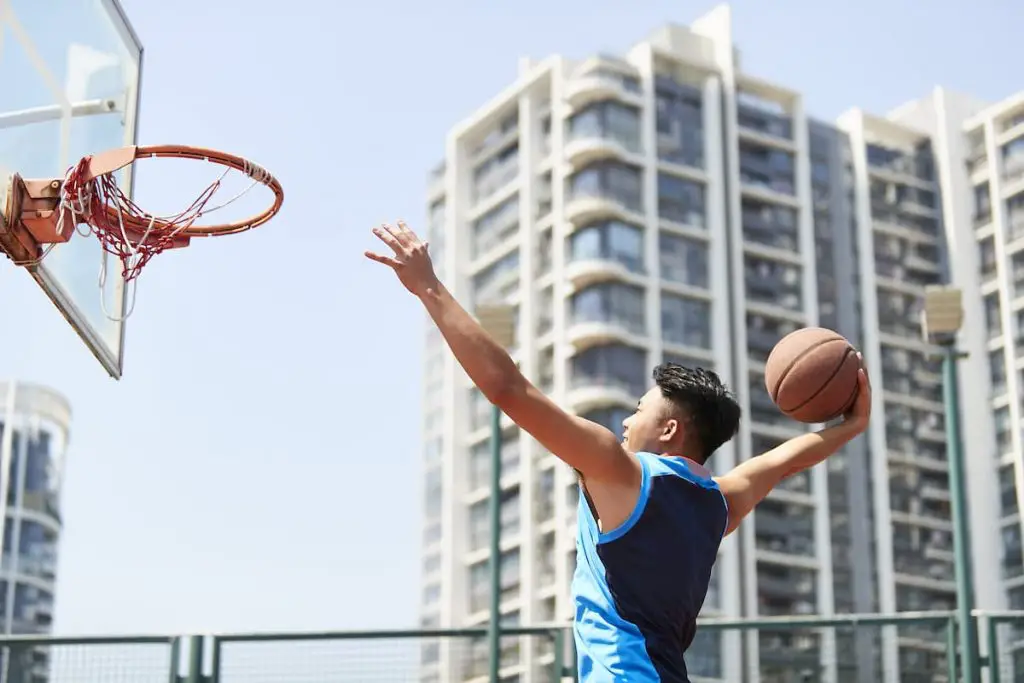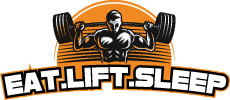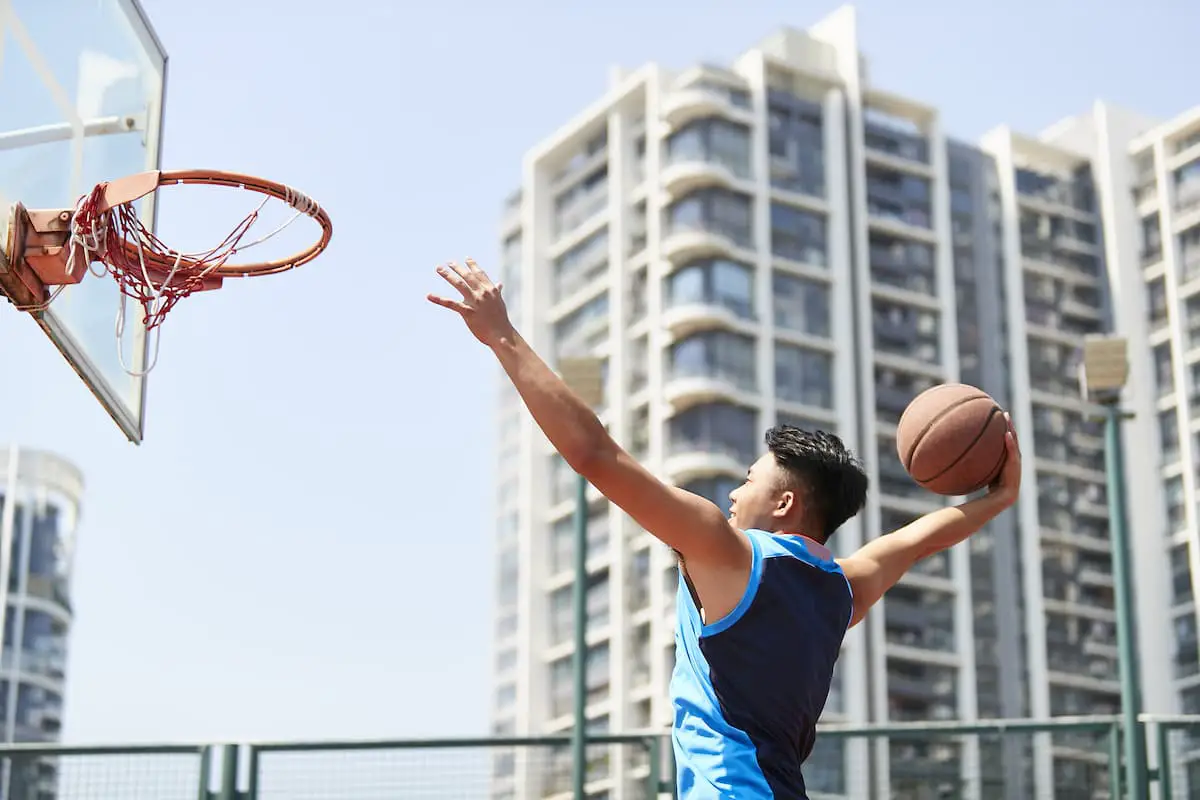Is basketball only for the tall? Did this thought ever occur to you while staring at the 10-foot rim? Well, there is no denying that being tall helps while kissing the rim. However, there is enough empirical evidence that short players (like yourself) can jump higher and dunk a basketball with the help of proper technique and conditioning training.
To dunk a basketball, how high you jump is the most important aspect. Developing this skill requires enhancing your average vertical jump which we suggest the Vert Shock Program.
Legs and core muscles provide the explosiveness required to jump higher. Mastering these muscles with the help of plyometric exercises will give you an edge in dunking.
Height and athleticism are the two important facets of basketball. However, when you focus on athleticism seriously, height takes a back seat. This post will help you develop that kind of athleticism.
This article is your ultimate guide to dunking a basketball if you are short.
If They Can, So Can You!
It’s often said that if you are short and aiming for the rim, you better be a Spud Webb or Nate Robinson.
Robinson stood 5’9″ tall while his dunk mentor Spud Webb was 5-foot-6. These two professional NBA athletes won the NBA’s coveted ‘Slam Dunk Title’ despite being shorter than others.
Spud Webb won the NBA’s ‘Slam Dunk Contest’ despite being the shortest athlete in NBA’s history. Nate Robinson not only won this glory, but he also made a record by winning this popular dunking title three times.
“When people look at me, they really don’t understand where the hops are coming” – Nate Robinson. This is how astonished people were when they saw Robinson fly over the rim.
They proved that short athletes can not only dunk a basketball but they can also dunk better than others.
If they can, so can you!

How to Jump Higher in 45 Minutes – The Workbook
This is now available for you to grab and get started today without waiting for any more information!
We have spend a lot of time making this VERY comprehensive and feedback has been VERY positive.
Dunking is more than a physical feat. You have to train your mind to believe that you can jump higher. It’s your hope that gets you through those tonnes of failed attempts on the basketball court. If you are short, you can’t lose hope, at least not in basketball.
With that said, let’s jump right into the exercises and techniques that will help you hone your dunking skills.
Training
Dunking requires explosiveness in your muscles, which means you have to act fast with all your strength. Thus, you have to train your muscles for both speed and strength.
Warmups
Warmups include stretching exercises to prepare your muscles for explosive workouts. They ensure proper blood circulation and stretching of your muscles before you dive into your workout routine.
There are two types of stretching – Dynamic and Static.
Dynamic stretching uses the speed of a movement to stretch your muscles. Dynamic stretching includes swinging your legs side to side, jumping jacks, hops, and skips, etc. These exercises are done before your workout.
Static stretching means stretching your muscles and staying in that position for a brief amount of time without moving. Static stretching includes bending over and touching your toes and other such static positions. These exercises are done to relax your muscles after your workout or on off days.
Jumping Jacks
Stand with your feet shoulder-width apart and hands at your side. Jump upwards while pushing your legs just beyond your shoulder width, and simultaneously raise your hands while mid-air, and then touch your hands together.
Hops and skips
Hop back and forth along a straight line on one foot. Now, skip the length of a court and try to bring your knees closer to your chest, keeping the contact with the ground minimal. Take two large skips for 3 jumps, then jump in the air for your third step. Go back to your starting position and repeat the exercise with the other foot.
Depth Jumps
Stand tall on a box or a ledge of a height similar to your average vertical leap. Jump off from the box. As soon as you hit the floor, explode upwards as high as you can. You can vary this warmup by jumping off from a lower box and then jumping onto a higher one.

Building Your Strength
Running with weights
Strap ankle weights around each ankle. For one month jog at a slower pace than normal for 30 minutes. As you build strength, slowly increase your pace each week.
Jumping Squats
Take a proper stance by keeping your feet directly underneath your shoulders. Now, lower yourself into the squat, keeping your back straight. Bend at your knees and hips until your thighs are parallel to the floor. Swing your arms in front of you. Jump up from this position keeping your legs straight and arms to the side of your body. Land on the balls of your feet and brace yourself for another repetition.
Perform 3 sets of jumping squats with 25 repetitions each. Take a 60-second break between each set.
Jumping Lunges
Stand with your feet shoulder-width apart with your arms relaxed by your side while engaging your core. Take a big step forward with your right leg and sink your weight down with your right leg forming 90° with the floor. Your left leg must be straight behind you with your knee slightly bent. This is your downward position. Launch your body upwards. Propel your arms and quickly switch the position of your legs while you are mid-air. Now, your right leg is extended behind and your left leg is in front. Gently land backin your basic luge position.
Perform 3 sets of jumping lunges with 25 repetitions each. Take a 60-second break between each set.
Calf Raises
Stand on the edge of the bottom step of the stairs. Tuck your tailbone in and plant the balls of your feet firmly on the step with your heels hanging over the edge. Slowly lift your heels as high as you can balance onto your toes. Hold this position for 2 seconds. Now, lower your heels below the step, feeling a stretch in your calf muscles. Hold this position for 2 seconds.
Perform 3 sets of calf raises with 25 repetitions each. Take a 60-second break between each set.
Skyrocket your vertical jump
The secret to increasing your average vertical jump is to increase your overall power-to-body ratio. This simply translates to increasing your speed and strength. Another major aspect to increase your vertical leap is flexibility. Being flexible not only increases your vertical leap but it also prevents injuries.
Let’s discuss some more workout routines that will augment your jumping ability.
Calisthenics exercises are best when it comes to strength building and flexibility. Exercise routines such as push-ups, sit-ups, squats, burpees, pull-ups, dips, handstands, leg raise, planks, and shuttle runs will contribute to your average vertical jump and expand your reach.
Plyometric exercises work on the core of dunking – speed. They teach your muscles to expand and contract within a short period of time. Since the game can change in the blink of an eye, these exercises are necessary to make you more athletic. Some common plyometric exercises are – ankle jumps, depth jumps, box jump, leg bounding, pike jumps, and lateral jumps.
Weight training can do wonders for your vertical leap as they will impart more strength to your muscles. You have been adding weights to your normal exercises and thus, you are already aware of its benefits. Weight training includes – leg press, deadlift, leg extension, leg curl, calf raise, bench press, back extension, and the shoulder press.
Practicing your jump is the most important facet. It is required that you engrave these repetitive movements in your muscle memory which means you don’t always have to think much about them. You can focus more on your game while some aspects are on autopilot mode.
Sprinting also helps you in enhancing your average vertical jump as it activates your fast-twitch muscles. Have you ever noticed that some of the best sprinters are also exceptional long jumpers? This is because sprinting gives that explosiveness required to act fast with great force. Does this sound similar to basketball?
Technique
Try touching the rim without a basketball in your hand. Propel yourself with one foot and reach the hoop with one hand, this technique ensures maximum reach. And if you are short, you must eliminate all the odds and look for the best techniques that would compensate for your short height.
Before using a basketball, practice palming the ball using small tennis balls. As you reach two steps away from the rim, jump from there and dunk the tennis ball. After you are comfortable with the tennis ball, replace it with a softball, followed by a mini basketball, and finally practice using a basketball.
If you are short, you must make sure to turn things in your favor. Practice palming the ball and excel in that first. Thus, there would be one less thing to focus on while dunking.
How to Practice Dunking?
After you are equipped with the necessary strength, it’s time to actually practice.
Basketball Burpees
As mentioned earlier, dunking requires explosive strength to match the speed and strength of this skill. Burpee is an exercise that perfectly fits this requirement. We will tweak some aspects of this exercise to practice dunking. This exercise will help you practice dunking with two hands.
Place a basketball on the floor instead of a medicinal ball, this way your hands will get the grip of basketball. While performing burpee, when in a push-up position, your hands must rest on the basketball. As you explode upwards, lift the basketball above your head. Touch the backboard and try to reach higher with every repetition.
Practice Finishing
Place two basketballs on either side of the free-throw line marching towards the net. Hold one basketball with both hands and sprint towards the hoop. Now, take a vertical leap and dunk. Sprint back and repeat with the other ball. Keep attacking the rim and try jumping as high as you can.
Freestyle Dunks
Start your run from just outside the free-throw area. You can choose any attacking positions. Then, sprint towards the hoop and dunk. Make as many hoops as you can. Each set of this freestyle dunk should consist of at least 8 reps.
Types of Dunkers In Basketball
One Foot Dunker
One foot dunker uses one foot to propel towards the hoop and palms the basketball in one hand. One-foot dunker enjoys the most success on the court as this dunk favors considerably more vertical reach.
Two Foot Dunker
This type of dunk is more balanced and assured as you are launching yourself with both your feet. Also, you have a better grip in the basketball as you are holding in with both hands. Two-foot dunking gives more control to your body when you are airborne.
The Alley-Oop
Alley-oop is a glamorous affair for the spectators. In this move, the player makes a pass to his high-flying dunker who catches the ball mid-air and slam dunks it.
Caution
You don’t want to be sitting outside the basketball court due to injuries, do you? While practicing dunking, keep certain things in mind to avoid injuries.
Avoid touching the rim again and again as the sheer force of your jump can tear your hand open. Also, not all rims are well maintained, rusty rims can cause more harm.
Perform your exercise routine with the proper technique because, if the exercises are done poorly, it can do more harm than good.
If you are a short person, a fall will not be easy for you. Look out for your knees and ankles while playing, as hurting these will stop you from displaying your skills on the court.
FAQs
How Tall Do You Have to be to Dunk a Basketball?
The standard basketball net is 10-foot high. The vertical reach of a 6-foot tall player is usually 8-feet. If you fall under the 6-foot category you have to compensate for this 2-foot difference. In this blog, we have proved it can be achieved with your efforts.
What is a Good Vertical Jump?
A good vertical jump ranges between 44-48 inches. Chicago Bulls’ legend Michael Jordan has the highest vertical leap of 48 inches.
Final Thoughts on How to Dunk a Basketball if You Are Short
Let’s be honest, being short at the basketball court is an actual disadvantage. But, the good news is you can turn such shortcomings into opportunities if you work on your skills.
Legends like Spud Webb and Nate Robinson proved that short players can slam dunk better than others.
Basketball skills can be mastered by devoting certain hours at the court. Improve your vertical jump, increase your grip on the ball, and you can effortlessly dunk a basketball.
We love the Vert Shock system as it offers a vast trove of amazing information, drills, and strategies to jump high fast and it is proven through numerous user testimonials.
They offer a TOTALLY FREE ebook to start learning to jump higher starting today, this minute, delivered to your email so you can start reading and working on your abilities immediately!








